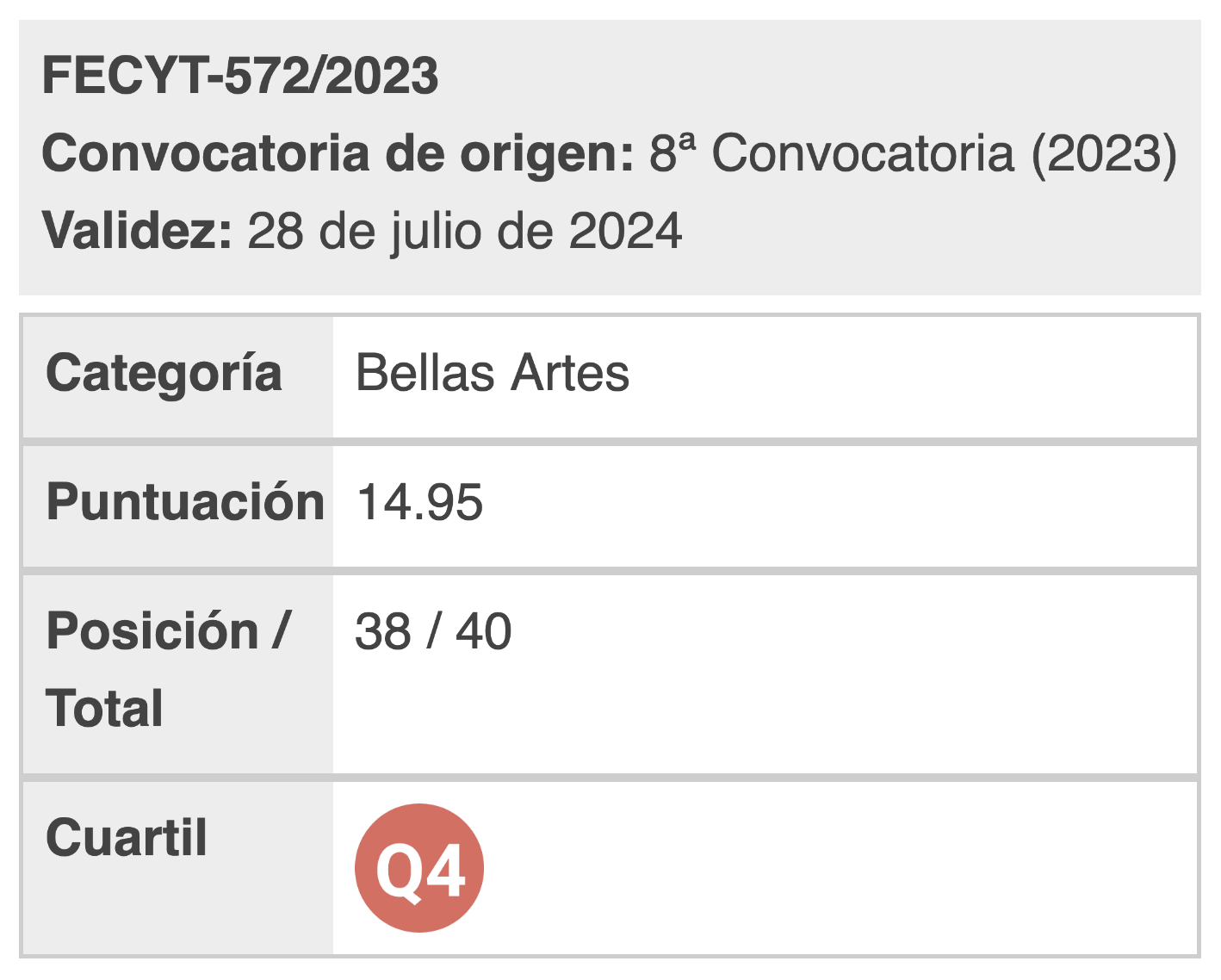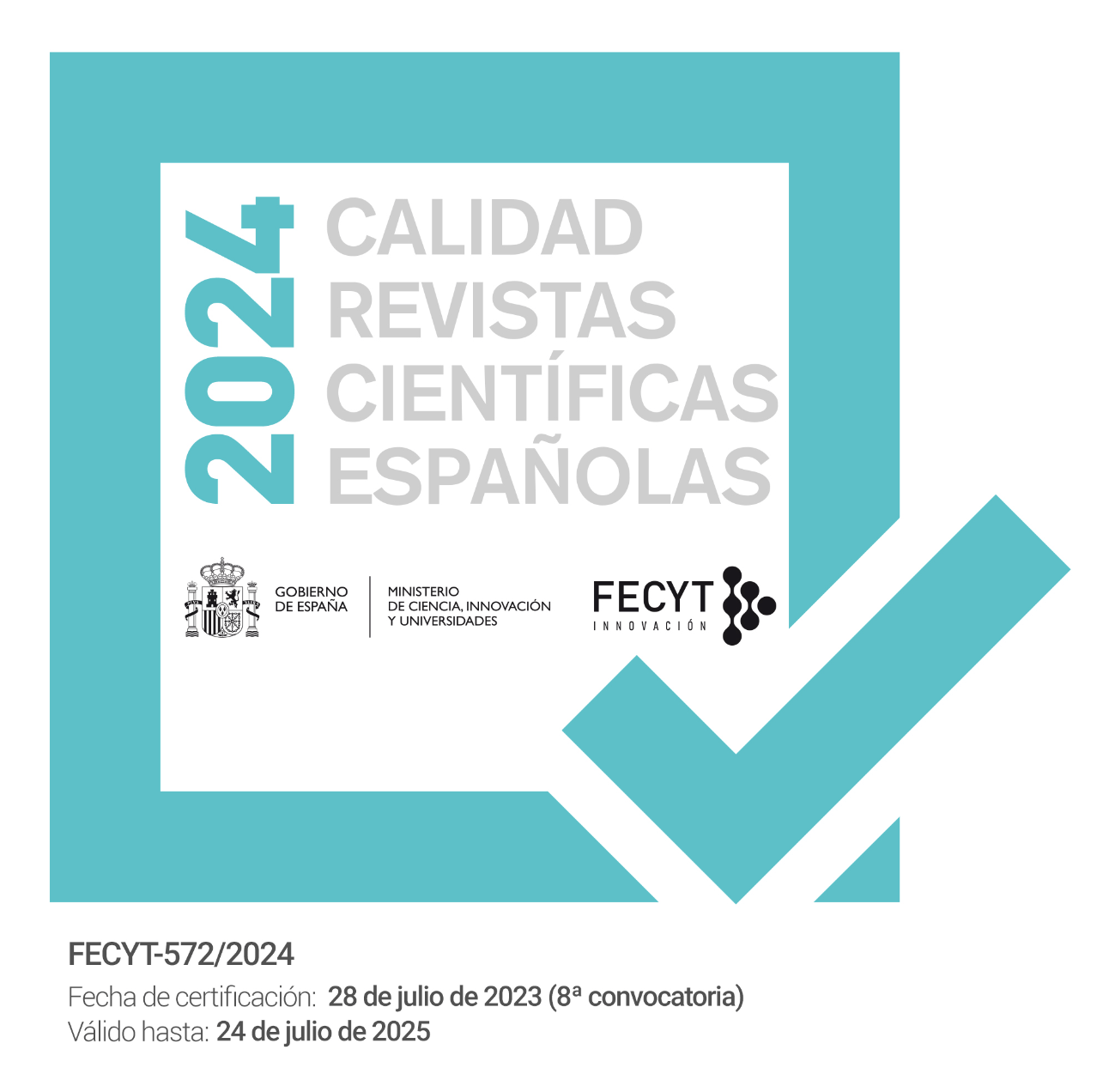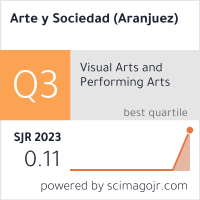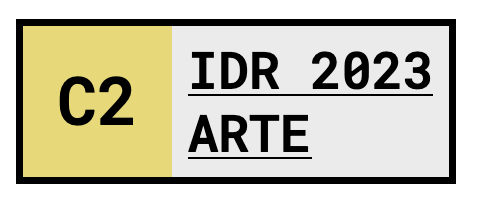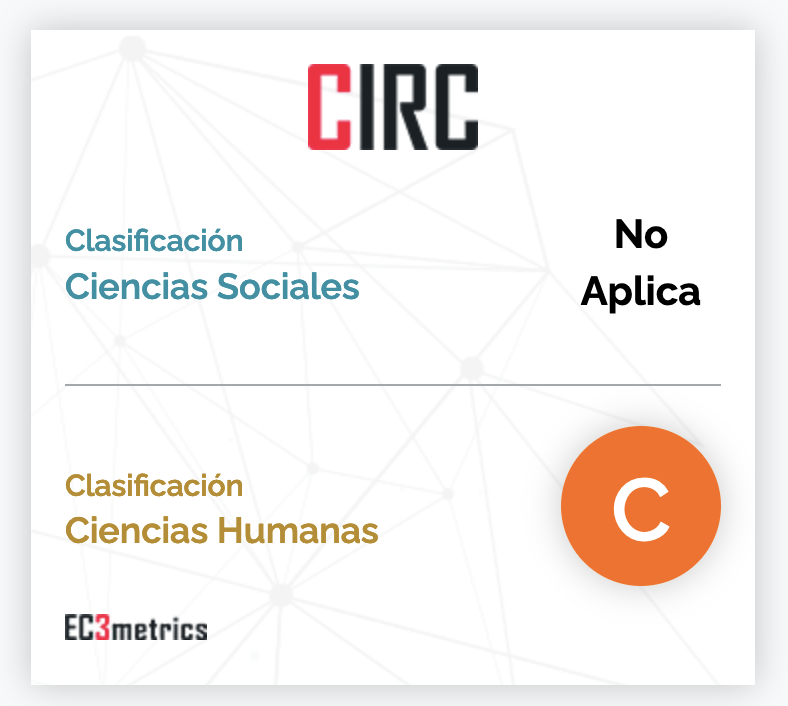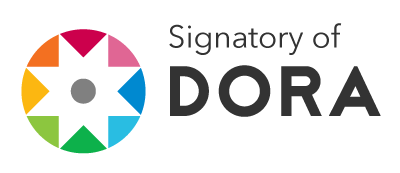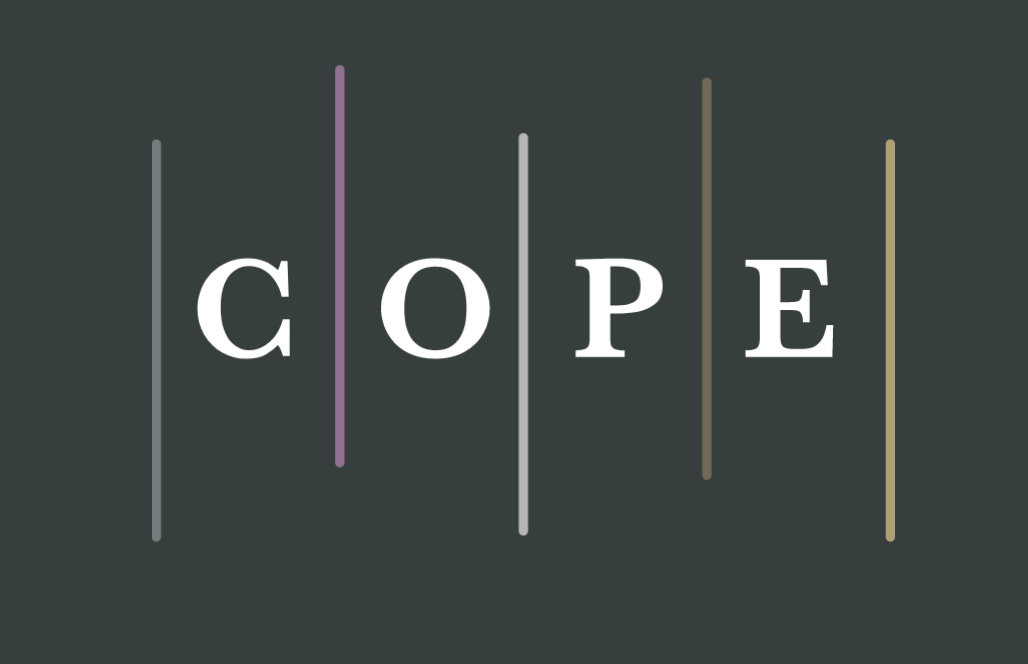METAPHORS OF THE HYPERMEDIATED CITY IN CONTEMPORARY ART
DOI:
https://doi.org/10.33732/ASRI.6792Keywords:
Metaphor, contemporary art, digital, hypermediated city, subjectivityAbstract
The visualization of the informational dimension linked to the urban environment organizes a perception articulated through an ecosystem of screens from which the hypermediated city emerges. This article examines the impact of different artistic productions that, as metaphors of physical-digital reality, configure the phenomenology of the landscape disposed by the technological imperative.References
Aldrich, V.C. (1968). Visual metaphor. En The Journal of Aesthetic Education, 2(1), 73-86. https://doi.org/10.2307/3331241
Alonso, E. y Sosa, J.A. (2017). Superposición de subjetividades: La ciudad y lo virtual. En Revista Indexada de Textos Académicos (RITA) (7), 102-109. https://tiny.cc/wub8zz
Arnau, J. (2022). En la mente del mundo: La aventura del deseo y de la percepción. Galaxia Gutenberg.
Antón, J. (3/05/2019). La vida actual no invita a pensar. [Entrevista con P. Sloterdijk]. El País. Recuperado de https://elpais.com/elpais/2019/05/03/ideas/1556893746_612400.html.
(Fecha consulta: 23-02-2024).
Benjamin, W. (2007). Libro de los Pasajes. Akal.
Black, M. (1962). Models and metaphors. Studies in language and philosophy. Ithaca. Cornell University Press.
Bolognesi, M., Brdar, M., Despot, K. (2019). Metaphor and Metonymy in the Digital Age. John Benjamins Publishing Company.
Borgdorff, H., Peters, P., Pinch, T., eds. (2019). Dialogues between artistic research and science and technology studies. Routledge.
Brandl, M.S. (2023). A philosophy of visual metaphor in contemporary art. Bloomsbury Publishing.
Bucknell, A. (2022). The Augmented City. En Modemworks. Research Issue nº 8. [En línea]. Recuperado de https://modemworks.com/research/the-augmented-city/ (Fecha consulta: 22-01-2024).
Buckhard, R. (2004). Learning from architects: the difference between knowledge visualization and information visualization. En Proceedings of the Eighth International Conference of Information Visualization (IV04), pp. 519-524. https://doi.org/10.1109/IV.2004.1320194
Didi-Huberman, G. (2010). Atlas. ¿Cómo llevar el mundo a cuestas? [Catálogo de la exposición]. MNCARS y TF Editores.
Didi-Huberman, G. (2006). Lo que vemos, lo que nos mira. Manantial.
Domínguez Muñino, J. (2020). Educando en nuevos procesos visuales: Abstracción y metáfora en la micrografía digital. En ASRI. Arte y Sociedad. Revista de Investigación en Arte y Humanismo Digital (18), 4 -18. https://doi.org/10.5281/zenodo.7652398
Essinger, J. (2007). Jacquard’s web. How a hand loom led to the birth of the information age. Oxford University Press.
García García. A. (2022). La ciudad y los datos: Nuevas realidades urbanas de la dimensión informacional. En UE Steam Essentials 2022.
García Vergara, M. (2020). Hiperespacios. En Enguita,N. y Castelló, J. (eds.) Hiperespais [Catálogo de la exposición homónima]. Fundació per amor al art.
Gómez De la cuesta, F. (2021). ULTRAFOTOGRAFÍA. Una investigación (extraordinaria) sobre la (foto) sensibilidad. Un proyecto sobre la luz y el color, el reflejo y el espectro, la forma y el soporte. CENDEAC. Centro Párraga.
Hansen, M. (2013). Bodies in code. Routledge.
Harraway, D. (1991). Simians, Cyborgs and Women: The reinvention of the nature. Routledge.
Huxley, A. (2002). Las puertas de la percepción. Edhasa.
Lakoff, G. y Johnson, M. (1986). Metáforas de la vida cotidiana. Cátedra.
Lima, M. (2011). Visual Complexity: Mapping Patterns of Information. Princeton Architectural Press.
Madary, M. (2021). Engineering the Minds of the Future: An Intergenerational Approach to Cognitive Technology. En Axiomates 32, 1281–1295. https://doi.org/10.1007/s10516-021-09580-5
Manovich, L. (2020). Cultural Analytics. The MIT Press.
Manovich, L. (2017). Instagram and contemporary image. California institute for Telecommunication and Information & The Graduate Center. Cultural Analytics Lab.
Martín Prada, J. (2023). Teoría del arte y cultura digital. Akal.
Picon, A. y Ratti, C. (2023). Atlas of the senseable city. Yale University Press.
Rees, M. (2022). Augmented Reality, the Expansive Object, and the Vivification of the Memory Theatre: Field Notes. En Geromienko,V. (Ed.). Augmented Reality Art: From an Emerging Technology to a Novel Creative Medium (2022 Edition), Springer. pp. 75-94.
Richardson, I. (2020). Postphenomenology, ethnography, and the sensory intimacy of mobile media. En: Miller G, Shew A (eds) Reimagining philosophy and technology, reinventing Ihde. Springer International Publishing, Cham, pp. 159–174.
Rogers, H.S. (2022). Art, Science and the Politics of Knowledge. The MIT Press.
Santos, D. (29/3/2012) Interview with John Craig Freeman. En dorothysantos.com. [Página web]. Recuperado de https://dorothysantos.com/2012/03/29/interview-with-john-craig-freeman/.
Serig, D. (2006). A conceptual Structure of Visual Metaphor. En Studies in Art Education Vol. 47 nº 3 (Spring 2006), pp. 229-247. https://doi.org/10.1080/00393541
Skwarek, M., Veenhof, S., Thiel, T., Pappenheimer, W., Freeman, J.C., Manzione, C., Rhodes, G.A., Cleater, J. (2011). The AR Art Manifesto. [En línea]. Recuperado de: https://manifest-ar.art/ (Fecha consulta: 02-2-2024).
Vincent, J. (2013). Breaking the Metaphor: Augmented Reality Theory and the New Aesthetic. En Cyborgology [Página web]. Recuperado de https://thesocietypages.org/cyborgology/author/jamesvincent/ (Fecha consulta: 17-1-2024).

Downloads
Published
How to Cite
Issue
Section
License

This work is licensed under a Creative Commons Attribution 4.0 International License.
You are free to:
Share — copy and redistribute the material in any medium or format.
Adapt — remix, transform, and build on the material for any purpose, including commercial.
Attribution — You must properly acknowledge the authorship, provide a link to the license, and indicate if any changes have been made.
You may do so in any reasonable manner, but not in any way that suggests that you endorse or receive any endorsement by the licensor for your use.
No additional restrictions — You may not apply legal terms or technological measures that legally restrict you from doing what the license allows.



